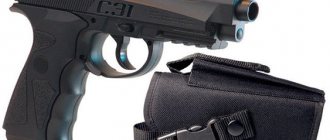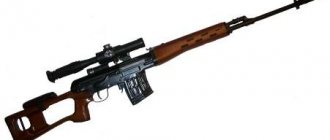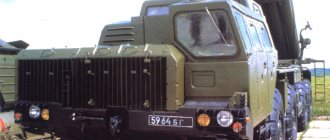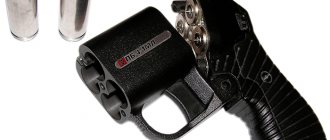Russian corvette Steregushchiy
A corvette is a type of small combat vessel designed to perform patrol and convoy functions. The main tasks of such a ship are to detect and combat enemy submarine and air forces.
The displacement of a corvette can vary from 500 to 1600 tons, the speed rarely exceeds 20 knots or 37 kilometers per hour.
As for weapons, corvettes usually carry on board missile or artillery installations with a caliber of up to 102 millimeters, anti-aircraft guns and bomb launchers for dropping depth charges. Occasionally, a corvette can be equipped with a torpedo tube.
In addition, corvettes have hydroacoustic and radar systems for air and underwater detection.
In their modern form, corvettes appeared shortly before the start of World War II. Interestingly, in the domestic classification, until recently, they belonged to the type of patrol ships, and the corvette, as a separate class, was identified only after the collapse of the USSR.
Destroyer
Destroyer "Sarych"
The destroyer or destroyer got its name in honor of the weapons of the first ships of this type. Initially, they were intended to create sea minefields, and also had torpedo tubes and small-caliber artillery to combat enemy ships.
Today, the main goals of destroyers are to combat air, underwater and surface targets as part of a squadron.
The weapons of these ships include missile launchers (formerly artillery), air defense systems and torpedo tubes.
It is somewhat incorrect to talk about the size and speed of this type of ship, since the understanding of destroyers in different countries varies somewhat.
For example, in Japan, the displacement of destroyers can reach 10,000 tons, in some countries it does not exceed 2,500. In Russia, the standard displacement of a destroyer is 6,500 tons, and the speed can reach 35 knots.
Corvette
A corvette is a type of small combat vessel designed to perform patrol and convoy functions.
The main tasks of such a ship are to detect and combat enemy submarine and air forces. The displacement of a corvette can vary from 500 to 1600 tons, the speed rarely exceeds 20 knots or 37 kilometers per hour.
As for weapons, corvettes usually carry on board missile or artillery installations with a caliber of up to 102 millimeters, anti-aircraft guns and bomb launchers for dropping depth charges. Occasionally, a corvette can be equipped with a torpedo tube.
In addition, corvettes have hydroacoustic and radar systems for air and underwater detection.
In their modern form, corvettes appeared shortly before the start of World War II. Interestingly, in the domestic classification, until recently, they belonged to the type of patrol ships, and the corvette, as a separate class, was identified only after the collapse of the USSR.
Frigate
Project 22350 frigate
In terms of size and maneuverability, modern frigates are very close to destroyers. However, if a destroyer is capable of fighting all types of targets: surface, underwater, air, then frigates concentrate only on fighting enemy submarines and aircraft.
They also have missile weapons, but they are not enough to effectively counter enemy ships.
Main differences
As for the materials from which the first ship of Project 20385 was built, they differ significantly from the materials of the ships of Project 20380. The Gremyashchiy corvette was built using a large number of composite materials that were developed by domestic enterprises. A special role in this was played by FSUE Prometey, whose specialists not only developed, but also created technologies for the production of polymer-composite materials suitable for shipbuilding.
Due to the fact that the superstructure of the Gremyashchiy corvette is made of non-flammable plastic, it was possible to significantly reduce the overall weight of the warship. This made it possible to increase the speed of the corvette and place heavier weapons on board.
When developing the new corvette, the designers took into account the comments of the military, who complained about the insufficient seaworthiness of the Project 20380 ships, so the Gremyashchiy will have better resistance to pitching. The corvette will be able to carry out its combat missions in sea conditions of up to 5 points. The survivability of the ship will also be significantly increased due to a decrease in the radar background, which will help the ship remain unnoticed by enemy radars, increasing the chances of the Thundering One to deliver a surprise attack on ships or coastal fortifications.
As for the power plant of the lead ship of Project 20385, it is currently two powerful 16D49 diesel engines, developing 6,000 l/s each. Initially, it was planned to equip the ships of the project with German engines, but since the situation in the political arena has become tense in recent years, it was decided to abandon the foreign-made engine.
The urgent task was to find or develop not only a new engine, but also other ship mechanisms that were planned to be imported. The domestic defense industry coped with this task with honor. Currently, domestic engines have been adapted for warships and have successfully passed a number of tests.
Cruiser
Missile cruiser "Moscow"
The cruiser is perhaps the most versatile modern type of ship, since it is the only ship capable of performing tasks both independently and as part of a squadron.
Currently, this type of ship is actively used only by the US and Russian Navy. In other countries, if frigates are found, it is in very small numbers.
The main task of these ships is to combat enemy surface forces.
Cruisers primarily carry missile weapons and may also have a small amount of air defense systems.
Until recently, cruisers had an extensive classification of their own. For example: battle cruisers, air defense cruisers, light, heavy, linear and even aircraft-carrying cruisers. However, by the end of the 20th century this classification was abolished.
Displacement of modern cruisers: up to 10,000 tons. Speed: 30-40 knots.
Distinctive features of project 20386
After a long and painful search for the optimal option, the designers made the only correct decision: to build new corvettes according to a fundamentally new design. The vessel must have a small displacement and a balanced set of weapons. The ships use a complex of low-visibility architecture integrated into the overall system of superstructures and hulls. The ship's hull and superstructure are created on the basis of composite materials. Robotic systems and new radar equipment significantly reduce the crew size.
The ship's layout is based on the principle of modularity, which allows any other type of weapon to be mounted on board. A distinctive feature of the corvette is the presence in the hold of the ship of capacious hangars with lapports on the sides of the surface part. Compared to the basic design, in practice the ships should have a contract displacement of no more than 2,500 tons. For comparison, it was initially announced that the new corvettes would have a displacement of 3-3.5 thousand tons.
Model of the corvette “Daring”
The propulsion system on the vessel is a combined one, consisting of M90FR gas turbine engines and electric generators. The total power of the main engines is 54-55 thousand hp. Electric motors have a power of 4400 kW. The engines on the corvette are domestically assembled, which makes the ships completely independent of the supply of equipment from abroad. A ship with a gas turbine unit must have a maximum speed of up to 30 knots and an economical cruising range of 5,000 km.
Even at the design stage, the new corvette was very different from its predecessors. Unlike the Steregushchy corvette, the new vessel has better seaworthiness and should increase its cruising range and autonomy. More comfortable living conditions for personnel have been created on the ship.
Battleships
Battleship of the Russian/Soviet fleet "Sevastopol" decommissioned in 1956
I don’t think it’s worth talking a lot about battleships. In the mid-twentieth century, these ships were real sea monsters - huge and heavily armed, but the Second World War showed their inconsistency and after it no one else was engaged in the construction of battleships, and the remaining ones were slowly decommissioned.
Aircraft carriers
The only Russian aircraft carrier “Admiral Kuznetsov”
It was these ships that overshadowed the battleships. No less huge, they served as full-fledged airfields in the middle of the ocean, providing air support to other ships.
In the photo: Russian corvette "Steregushchy"
Source: https://zen.yandex.ru/media/wt1/v-chem-raznica-mejdu-korvetom-esmincem-fregatom-i-kreiserom-5b97984367918d00aa70c3c5?&from=feed
Share link:
- Click to share on Twitter (Opens in new window)
- Click here to share content on Facebook. (Opens in a new window)
- Send this to a friend (Opens in new window)
- Click to share on Skype (Opens in new window)
- Click to print (Opens in new window)
Liked this:
Like
Links
- Sergey Sokut.
The Ancient East Egyptian papyrus boat • Egyptian merchant ship • Phoenician merchant ship • Phoenician bireme Ancient Greece Hexera • Hoplitagos • Hippagagos • Octera • Pentecontera • Septera • Triacontera • Triere • Ennera Ancient Rome Actuary • Bireme • Decimreme • Quadrireme • Quinquereme • Liburna • Roman merchant ship • Etruscan ship • Trireme • Unireme The Middle Ages and the Age of Great Geographical Discoveries Mediterranean Sea Barbarian ship • Venetian caracca • Galleon • Genoese merchant ship • Dromon • Caracca • Caravel • Katorga • Nave • Seagull Northern Europe Gukor • Drakkar • Knorr • Kogg • Strug • Rook • Flemish Karakka • Schneka Near East Boom • Gay-bao • Zaruka • Doe New World Kayak • Piroga Far East Guari • Chinese junk • Kobukson • Japanese junk • Catamaran • Proa Age of Sail Battle Line Battleship • Frigate Auxiliary Bombardier Ship • Bombardier Boat • Boat • Firebrand • Brig • Gekboat • Gukor • Ketch • Corvette • Cutter • Luger • Packetboat • Pinnace • Pink • Pram • Tender • Sloop • Shnyava • Schooner • Yacht Sailing and rowing Akat • Longboat • Galeas • Galiot • Galera • Gichka • Kaika • Kirlangich • Kocherma • Lanson • Pinas • Pink • Scampavea • Turuma • Shebeka • Shkut Merchant and cargo ships Aak • Bagala • Baltic ketch • Barque • Barque • Barquentine • Kayak • Brigantine • Billander • Gabara • Galleon • Yekt • Karbas • Kof • Koch • Kraer • Lichter • Mokshan • Pinas • Pink • Half-acre • Saik • Sakoleva • Sambuk • Skafo • Skif • Skuche • Trebaka • Tjalk • Feluka • Flute • Chektyrme • Shalanda • Shmak • Schooner Commercial Hooker Yacht • Yule • Dogger • Muleta • Rybnitsa • Tartana • Fish Hooker • Scow • Schooner Century of steam Sailing Boston Whaler • Windjammer • Clipper • Lorcha (Bedar • Pinas) Sailing-steam Battleship • Clipper • Steam frigate Commercial Whaler Modern times Yachts and others Cruising yacht • Catamaran • Trimaran • Pentamaran • Dainarig
Museum ships[edit]
ARA Uruguay, an 1874 Argentine corvette, has been a museum ship in Buenos Aires since 1967.
- ARA Uruguay, 1874, steam and sailing barque, Buenos Aires, Argentina
- HMAS Castlemaine, 1941 Bathurst-class corvette, Williamstown, Victoria, Australia
- Imperial Marinheiro 1955 Imperial Marinheiro-class corvette, Porto Velho, Brazil
- Solimões, 1955 Imperial Marinheiro-class corvette, Belem, Pará, Brazil
- HMCS Sackville, 1941 Flower-class corvette, Halifax, Nova Scotia, Canada
- HMAS Whyalla, 1941 Bathurst-class corvette, Whyalla, South Australia, Australia
- Karjala, 1968 Turunmaa-class corvette, Turku, Finland
- Hiddensee, 1984 Tarantula-class missile corvette, Fall River, Massachusetts, USA
- HTMS Maeklong in Samut Prakan Province, Thailand.
- ROKS Pohang
(PCC-756), a POHANG-class corvette in Pohang, South Korea.











